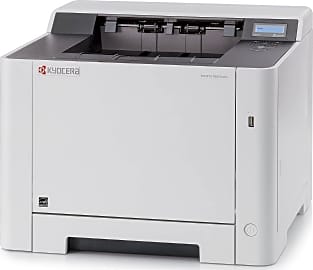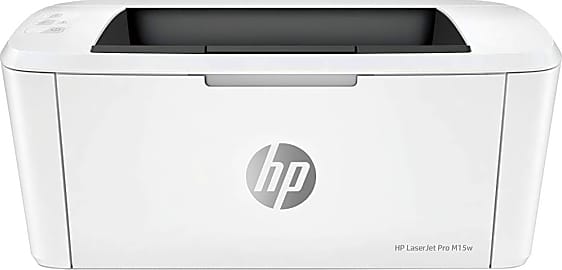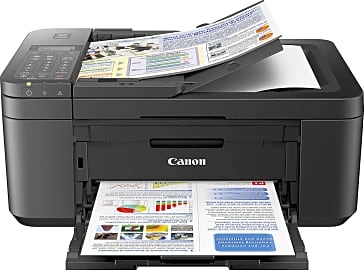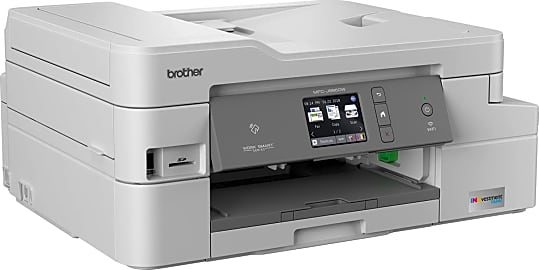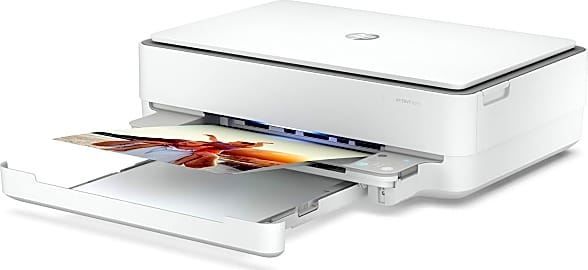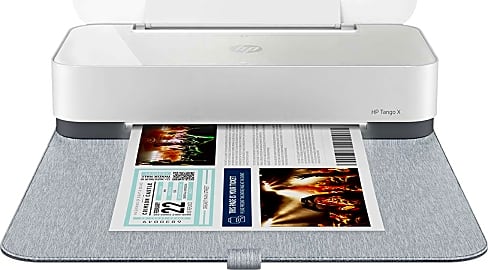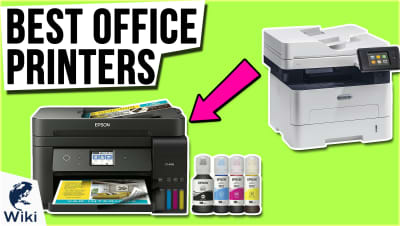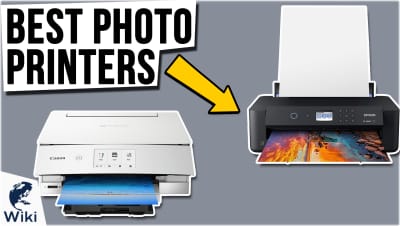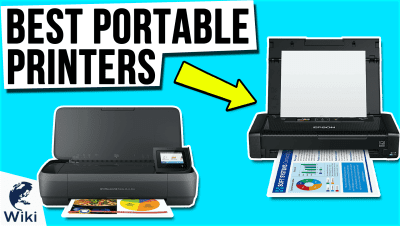The 10 Best Home Printers

This wiki has been updated 39 times since it was first published in June of 2016. Though much of our professional and personal documents may live in the cloud these days, sometimes physical copies are necessary. Whether you're working from home, completing homework assignments, or frequently use photos for crafting, having a printer in your house can come in handy. From all-in-one models to basic printers, the selections on our list offer something for everyone. When users buy our independently chosen editorial picks, we may earn commissions to help fund the Wiki.
Editor's Notes
December 16, 2020:
This round of updates was quite the shakeup for a number of reasons. In a few cases, it was simply a matter of newer models with more powerful features coming on the market. The HP OfficeJet Pro 8035, for instance, was replaced with the HP OfficeJet Pro 9015 thanks to a faster print speed, higher paper capacity, and more compact design.
In some cases, rankings shifted as a result of other options coming on the market that did a better job of achieving the same results. The HP Tango X, for example, is still a solid choice, but fell in the rankings relative to the Canon Pixma TR150, which provides a similarly compact design with the added benefit of optional battery power and onboard controls. The Canon Pixma G6020 was bumped off the list altogether in favor of the Epson EcoTank ET-2750 thanks to a sleek design, higher ink capacity, and more efficient operations.
There were some instances where models simply did not offer distinct enough benefits to warrant their inclusion anymore. The Canon Wireless TS8220 All-In-One was a model that achieved many of the same functions as other items on the list at a higher price point. We instead decided to highlight a couple of picks like the Kyocera ECOSYS P5021cdw, which is a relatively compact, high-performance option that may benefit people who frequently print in high volumes. That being said, if you’re printing more than 1,000 pages per month, it might be worth it to invest in an even more powerful printer intended for office use.
June 12, 2019:
With a reliable yearly turnover from pretty much every brand on the market, there's at least one new exciting printer from all companies. When considering what makes a good unit for the home, it's important to consider the average home user, who might fire up their printer only a few times per week if they aren't running a business. Given that usage pattern, things like a printer's footprint become rather important, and the HP Tango that took our top spot boasts one of the lowest profiles out there, as well as a built-in protective covering to store it if you can't dedicate a spot for it to live. It's also somewhat surprising that a model that small can be an all-in-one, and can be as reliable as it is. It seems like Epson isn't too interested in upgrading their Eco-Tank lineup, which are still fine printers, but they're getting a bit outdated in terms of connectivity, especially when you look at their XP-7100, which made it into the number two slot. Further down the list you'll see a new Pixma model from Canon that takes the ink tank mantle from Epson and applies it to a very competitive photo printer, but that's a bit too pricey for its other specs to climb any higher than fifth.
Special Honors
Custom Printing Services If you need to print in serious bulk or are looking to have your designs and photos printed on items that won't exactly fit in a paper tray, services like those offered by Vistaprint can be useful. From business cards to t-shirts, coffee mugs, and even face masks, you can customize your order in a few clicks and have it delivered to your doorstep. They even offer design services if you're not sure where to start. vistaprint.com
Choosing The Right Printer For Your Home
One reason a household may be reticent to invest in a home printer is the perceived high cost of these units.
With the exception of the professional who works from the residence, most households don't actually use their printers all that much. In the average American home, you will indeed find a printer, but that statistic belies a recent trend: over the past few years, sales of printers — both "all-in-one" printers that can copy, scan, and fax, as well as single function printers — have been on the decline.
With so much of life now relegated to the online world, many people simply see less need for a printer. We look at photos on social media or on our phones, we fill out forms online, and we deal with our banks via their website instead of the post office or the teller's face. However, there are still myriad reasons why keeping a printer at home is a good idea. First and foremost, a hard copy of a document can never be lost due to a technological glitch. (Nor can a printed picture be lost to a computer crash or lost or broken phone, either.) And ironically, on the flip side of that equation, many printers that feature scanners can also be used to upload analog documents or photos into the digital world, preserving them on a disk, computer, or the cloud, and making them available for sharing with friends or for publication on a website or other media platform.
One reason a household may be reticent to invest in a home printer is the perceived high cost of these units. In fact, you can find a perfectly decent printer suitable for almost every use for well under $100. And these are devices capable of printing, scanning, sending and receiving faxes, and, in many cases, working wirelessly.
Another feature to look for in a home printer is a full-color LCD touchscreen interface. Many modern printers intended for home use offer step-by-step operation guides complete with illustrations right there on the screen, so even someone with little technical prowess can complete most of the functions the printer offers without prior operational knowledge. These screens also help a printer self diagnose various issues it experiences.
The Differences Between Inkjet And Laser Printers
As their name suggests, inkjet printers effectively spray layers of ink down onto a page, creating text or images by adhering thousands and thousands of minute dots of color to the paper passing through the unit. Laser printers, on the other hand, use a rapidly scanning beam of concentrated light that attracts toner onto paper via a static electric charge. The differences in the way these two systems operate come with many pros and cons, depending on your personal needs.
So if your primary need for a home printer is to print photographs or documents with lots of colorful graphics, an inkjet printer is likely your best bet.
Inkjet printers operate more slowly than laser printers, advancing pages beneath their spraying ink with a steady, patient effort, so if you have lots of documents to print and you don't like waiting around for them, then a laser printer is your best choice. Many affordable laser printers can churn out more than two dozen pages per minute, perfect for printing out long documents like a complex tax return or a thesis paper. But affordability is a relative term here: laser printers are significantly more expensive than inkjet printers, as are their toner cartridges when compared to ink cartridges (though to be fair an average toner cartridge will cost less than the multiple ink cartridges that would be required to produce the same number of prints). Thus, we see a clear divide, with laser printers being more expensive than inkjet printers, but more efficient and, after the initial investment in the unit and its toner, more cost-effective in the long run.
Beyond price and speed, what is the primary dividing line between the two options? Inkjet printers create better looking photos, laser printers create crisper, better defined text. So if your primary need for a home printer is to print photographs or documents with lots of colorful graphics, an inkjet printer is likely your best bet. If you primarily need text-heavy, monochrome documents, a laser printer makes sense. And if you're still undecided, just consider all the other features you want and decide based on price.
Choosing The Right Paper For Your Printing
A good inkjet printer should be able to handle almost any sheet of paper that is rated for use in a printer. Some of the stiffest pages — those approaching the level of a card stock — may need to be fed into the printer one at a time, but these are likely only used on rare occasions anyway.
For text and/or images that are even more crisp and clear on the page, look for printer paper with a brightness rating above 95.
If you are going to be printing basic documents, then look for a printer paper with a brightness rating of at least 90 and a rated weight of about 20 lbs. That approximates the going average for more paper used in copy machines at busy offices and is suitable for a printout that you don't intend to keep forever, but that will last just fine under most circumstances. For text and/or images that are even more crisp and clear on the page, look for printer paper with a brightness rating above 95. And as for paper weight, any pound rating above 24 lbs. is where paper begins to look and feel noticeably high-quality.
If you use a laser printer, watch out for any paper that might be heat sensitive. A paper with a high gloss finish or with any embellishments like an applied seal may be damaged by the heat within a laser printer (and may damage the printer itself if its comes apart inside the unit). In general, laser printers should be used with standard paper free of gloss, texture, and other flourishes. These printers really are intended for rather straightforward black and white documents.




